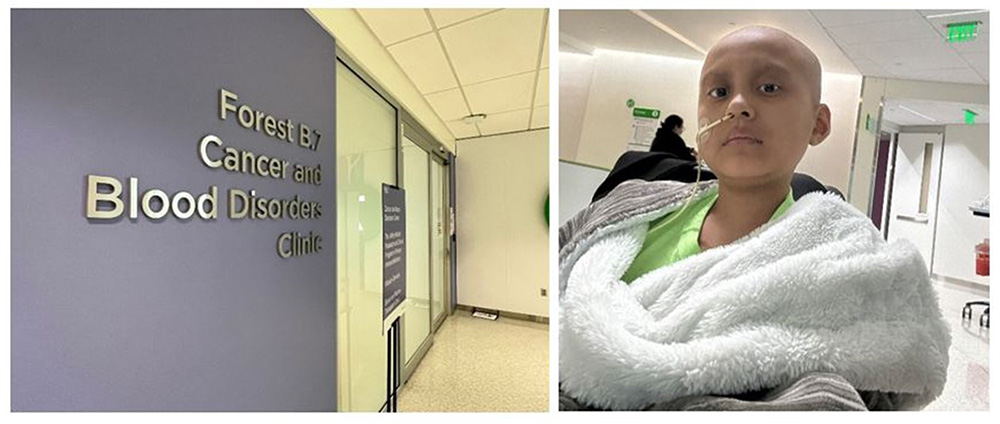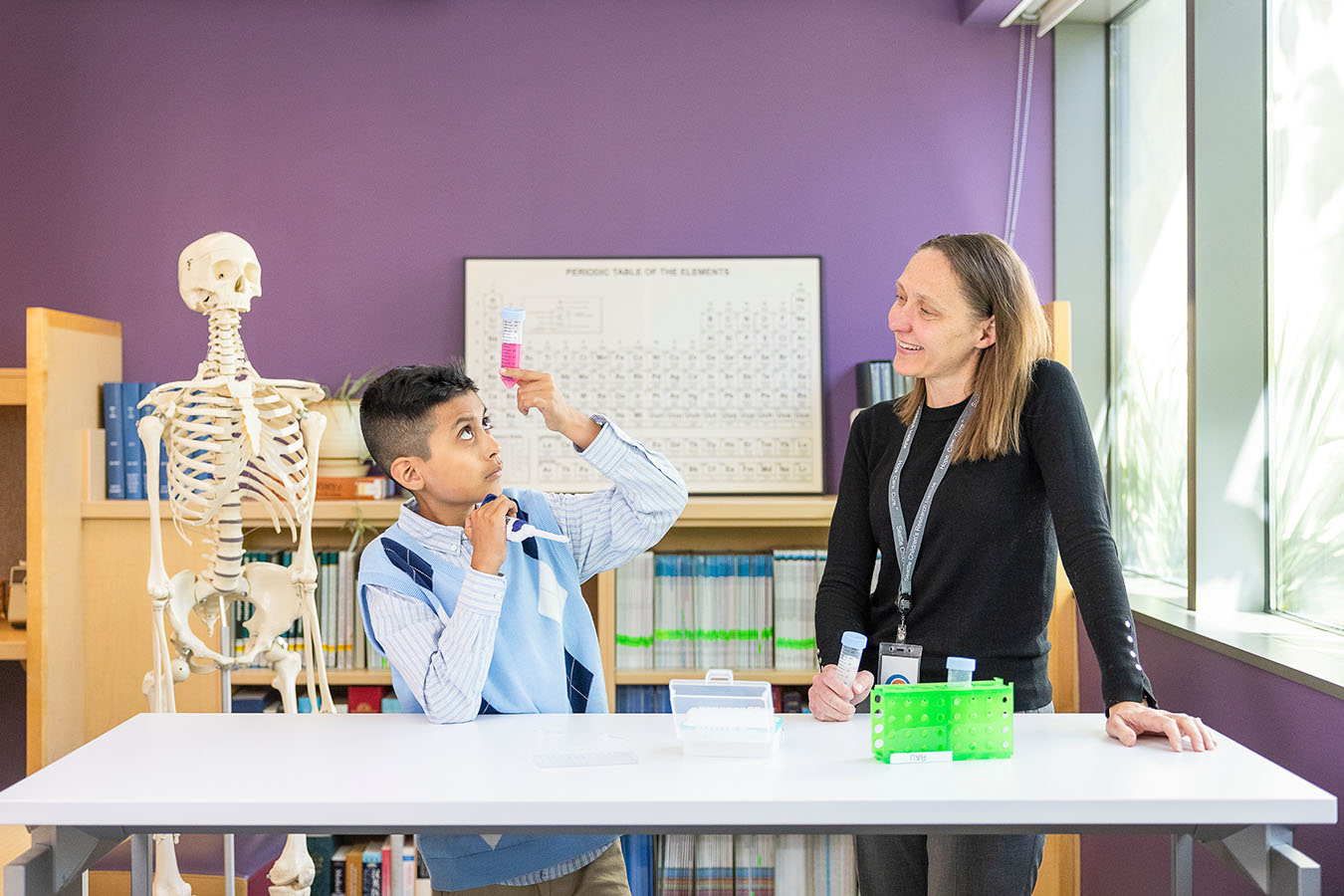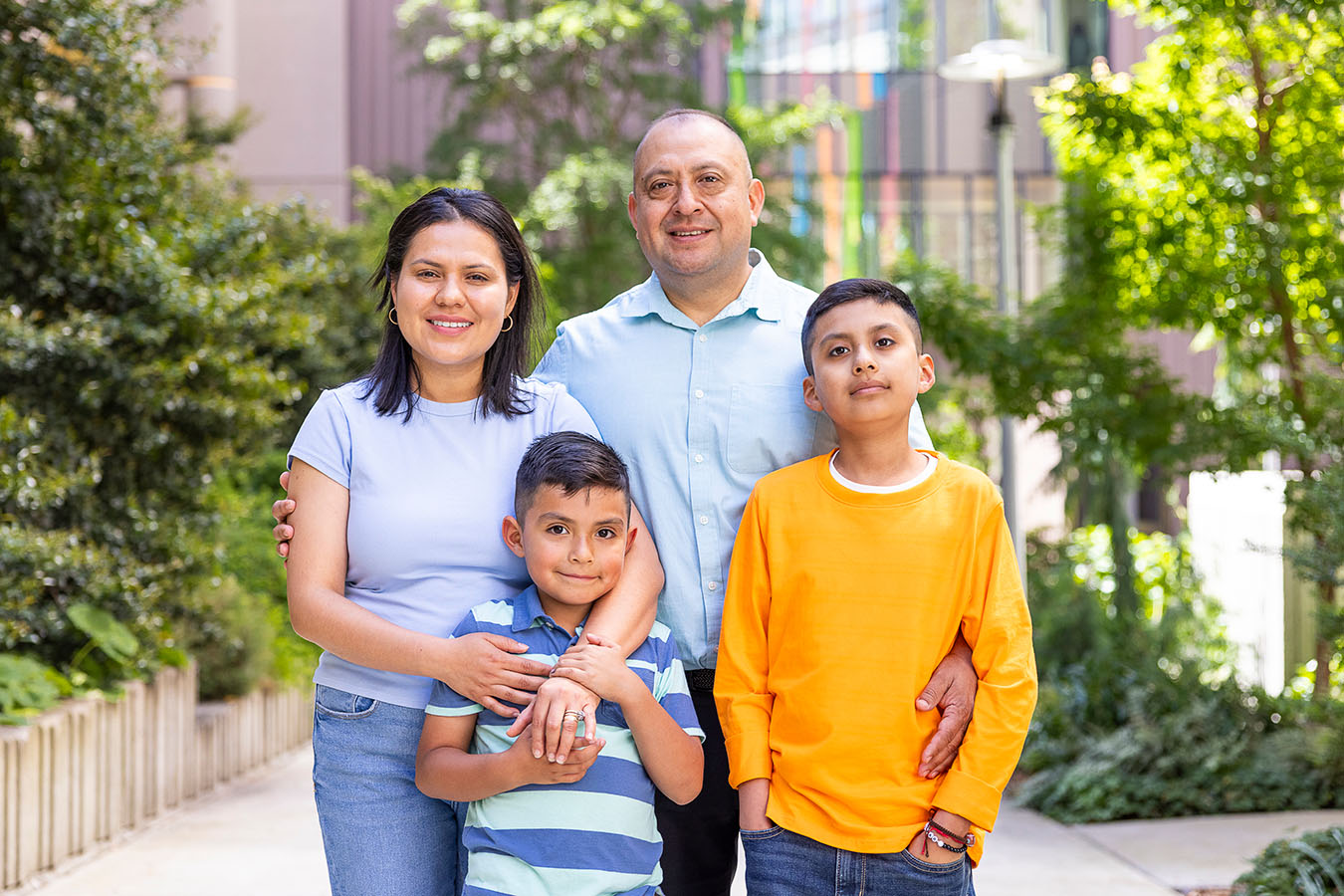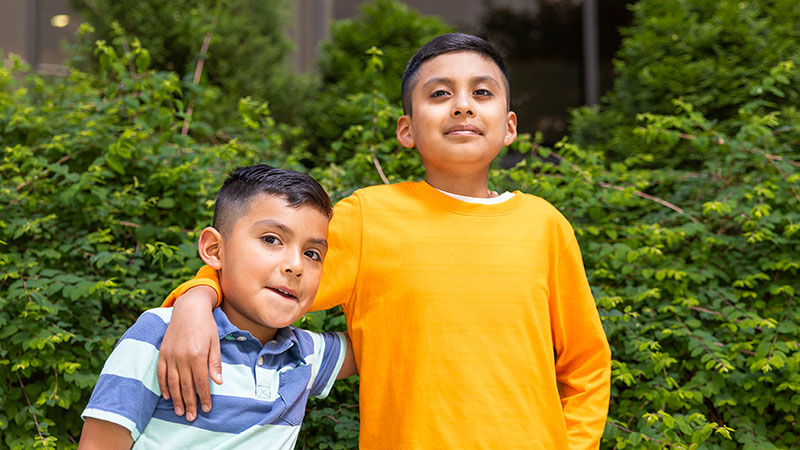The Breakthrough Cancer Treatment and Relentless Determination That Changed Ino’s Life
7.1.2025 | Ashley Speller
At just 10 years old, Ino’s life changed forever when his parents received a sealed orange envelope from doctors during a late-night visit to the emergency room.
The fourth grader from Renton, Wash., had been experiencing concerning symptoms, including patterns of fatigue, weakness, extreme cold sensitivity, high fever and weight loss.
“I stayed with Ino while they drew blood from him, and within 20-25 minutes the doctor showed up and said, ‘You are going to have to go to Seattle Children’s and give them this envelope,’” said Ino’s dad, Inomar. “From that moment, I knew something was wrong.”
At Seattle Children’s, Ino underwent further testing where Inomar and Ino’s mom, Cecilia, soon learned their son had leukemia, a cancer of the blood.
From Diagnosis to Determination
Acute lymphoblastic leukemia (ALL) is the most common type of cancer in children. Symptoms tend to appear over a matter of days or weeks and quickly worsen. Children diagnosed with B-Cell ALL who are 10 years or older are categorized as “high risk.” This was true for Ino.
“Right away, Cecilia started to cry,” recalled Inomar. “Then Ino asked, ‘Am I going to die, Dad?’ We were devastated, but I tried to hold myself together and we started asking the doctors so many questions.”
Seattle Children’s Leukemia and Lymphoma Program includes internationally recognized experts working to improve pediatric cancer care and cure rates. Providers leave no stone unturned helping kids like Ino beat their disease and thrive. Ino’s family put their full trust in the team.
 At just 10 years old, Ino was diagnosed with leukemia, a cancer of the blood and one of the most common types of childhood cancer.
At just 10 years old, Ino was diagnosed with leukemia, a cancer of the blood and one of the most common types of childhood cancer.
Pediatric Cancer Research Fuels New Hope
Ino began the first phase of chemotherapy in the hospital’s Cancer and Blood Disorders Center, a treatment in which medicines are delivered into the bloodstream and throughout the body to attack and kill fast-growing cancer cells.
Children with cancer at Seattle Children’s have access to promising new treatments in research studies known as clinical or therapeutic trials. Seattle Children’s is among the top childhood cancer centers in the United States with the most patients enrolled in clinical trials.
Within months of Ino’s diagnosis, impressive results were published in The New England Journal of Medicine from The Children’s Oncology Group AALL1731 clinical trial co-led by researchers at Seattle Children’s Research Institute, which showed that adding the immunotherapy drug blinatumomab to a chemotherapy regimen for children with B-Cell ALL decreased risk of relapse by about two-thirds.
 Ino received specialized cancer care and participated in a breakthrough clinical trial at Seattle Children’s (Pictured left to right: Ino with physician-researcher Dr. Rachel Rau)
Ino received specialized cancer care and participated in a breakthrough clinical trial at Seattle Children’s (Pictured left to right: Ino with physician-researcher Dr. Rachel Rau)
The findings represented the biggest breakthrough in childhood cancer treatment in decades. Based on the promising data from that study, Ino was treated with the new protocol. The blinatumomab was administered for 28 days from a backpack he wore containing the medicine.
“He’s done really well and we are optimistic about him beating this disease,” explained Dr. Mignon Loh, Seattle Children’s head of the Division of Pediatric Hematology, Oncology, Bone Marrow Transplant and Cellular Therapy, and Ino’s primary oncologist. “There is so much hope right now in treating ALL, including therapies that were not routinely available 10 years ago that have been transformative. We can offer focused, specialized care, and stay ahead of all the latest advances and will relentlessly go to the ends of the earth to identify any new ideas, new compounds, new strategies to treat the patients we care for who have the most aggressive diseases. This is an example of how we can think bigger, in ways that could help children around the world.”
 Ino continues to receive follow-up treatment at Seattle Children’s and is thriving (Pictured left to right: Cecilia, Abimael, Inomar and Ino)
Ino continues to receive follow-up treatment at Seattle Children’s and is thriving (Pictured left to right: Cecilia, Abimael, Inomar and Ino)
Surviving and Thriving After Cancer
Ino successfully completed the intensive phase of his treatment and is now in remission.
“March of 2025 was one year since I was diagnosed,” he said. “Now I’m in maintenance treatment and I feel great!”
Ino recently celebrated his 5th grade graduation surrounded by friends and family and spends his free time exploring the outdoors with his brother and creating art.
“During his hospital stays, Ino built relationships with different providers, and used his art and talent as a way of connecting,” said Mike Cardenas Willen, a registered art therapist in Seattle Children’s Child Life department. “He started making paintings to give to his nurses and doctors to show his appreciation for them and to reflect on those relationships that are really important to his treatment.”
“He has been blessed by all of the staff at Seattle Children’s,” said Ino’s parents. “We all have, because we couldn’t have found a better place to be in this situation.”
Seattle Children’s provides the most advanced treatments and clinical trials for children, teens and young adults with cancer of any pediatric hospital in the Pacific Northwest. Additionally, U.S. News & World Report has ranked Seattle Children’s cancer care center among the top 10 pediatric cancer programs in the nation. Visit Seattle Children’s Leukemia and Lymphoma Program to learn more.
Resources
- What is acute lymphoblastic leukemia (ALL)?
- Leukemia and Lymphoma Care at Seattle Children's
- Research and innovative treatments for Cancer and Blood Disorders
- Learn More About Creative Arts Therapies at Seattle Children’s
- Seattle Children’s Blinatumomab Study Aids Odds – Featured Research
- Improve lives today and create better tomorrows by giving to Seattle Children's

